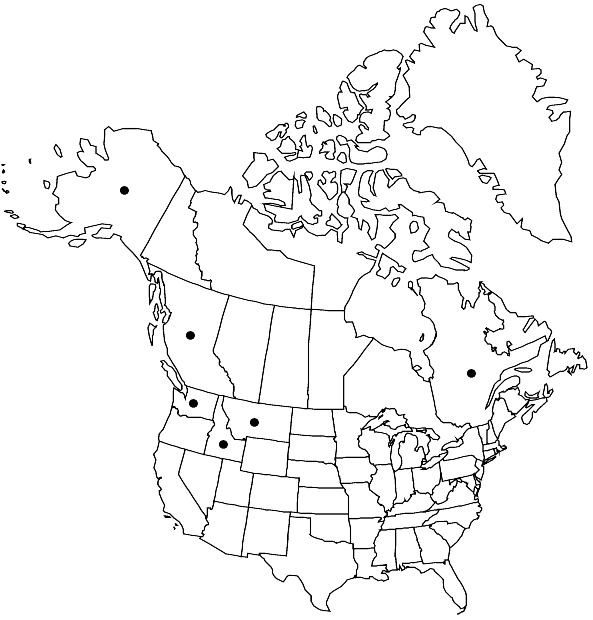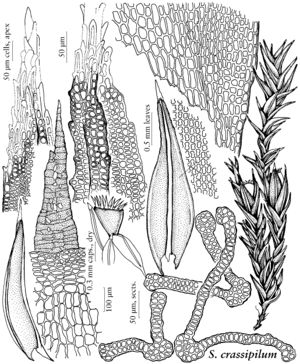Schistidium crassipilum
Bryophyt. Biblioth. 49: 224, fig. 90. 1996,.
Plants in open, occasionally compact tufts, olivaceous or brownish, sometimes with yellow or orange tones. Stems 1–3.5(–5) cm, central strand distinct. Leaves erect or slightly curved when dry, ovate-lanceolate, sharply keeled distally, 1.7–3.3 mm, 1-stratose with 2-stratose striae or patches or occasionally 2-stratose distally; margins recurved to well just before the apex, often less recurved to nearly plane on part of one side of leaf, usually denticulate near apex, usually 2-stratose or 3-stratose; apices acute; costa percurrent or excurrent as a denticulate, usually decurrent awn, abaxial surface often papillose; basal marginal cells quadrate or short-rectangular, transverse walls often somewhat thicker than longitudinal walls, often trigonous; distal laminal cells usually rounded or short-rectangular, 8–9 µm wide, weakly sinuose. Sexual condition autoicous. Capsule red-brown, sometimes orange-brown, elongate-cylindric to cylindric, 0.8–1.4 mm; exothecial cells mostly elongate, mixed with angular-isodiametric cells, walls unevenly thickened and somewhat curved, often trigonous; stomata absent or few; peristome patent to squarrose, sometimes twisted, 300–450 µm, red, densely to finely papillose, entire or strongly perforated. Spores 8–11 µm, granulose or verruculose.
Phenology: Capsules mature late spring to early summer.
Habitat: Open to shaded often limestone rocks, common on artificial substrata such as curbs
Elevation: low to moderate elevations (0-1000 m)
Distribution

B.C., Que., Alaska, Idaho, Mont., Wash., Eurasia.
Discussion
Schistidium crassipilum is distinguished by its unevenly 2-stratose leaves, its elongate-cylindrical to cylindrical capsules, and the mostly elongate exothecial cells, with their cell walls unevenly thickened and somewhat curved. S. Flowers (1973) may have illustrated this species (as Grimmia apocarpa), although details of the exothecial cells that would confirm this are absent in his illustrations.
Selected References
None.
